DEFINITION OF TERMS:
- KEYSTONE means they are listed by National Wildlife Federation as core plants for a wildlife garden in my ecoregion (Ecoregion 8).
- NOT QUITE NATIVE means they are slightly out of range but adjacent to NYS as determined by GoBotany and NY Flora Atlas.
- Otherwise the plant is a NY-native or native to the area noted.
Pussytoes
2022 Update: .I’ve grown a variety of pussytoes (described below) because they, along with pearly everlasting, are host plants for the American Lady butterfly. Sadly, for the last few years, we have seen NO American Lady caterpillars. Not a good sign!
Plantain pussytoes (Antennaria plantaginifolia)
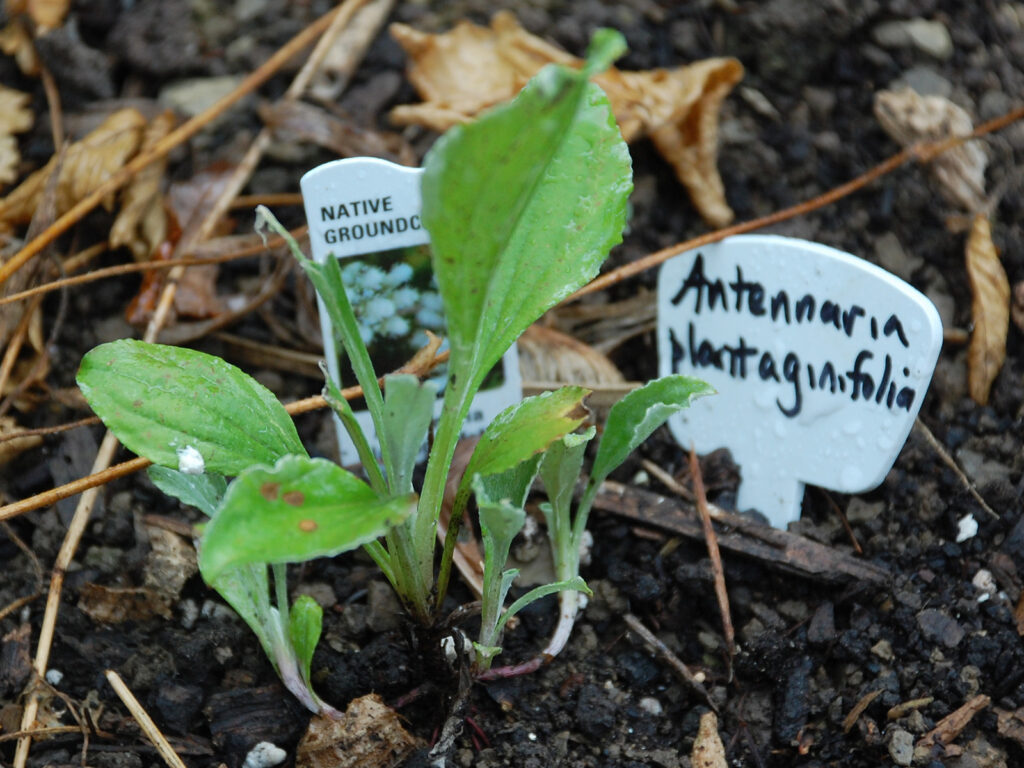
We got this from the Millersville Native Plant conference. We like to have pussytoes as a host plant for American Lady butterfly caterpillars.
Deer resistance: No
** Attracts predatory or parasatoid insects that prey upon pest insects **
- Learn more:
- Wildflower Center: Plantain pussytoes
Singlehead pussytoes (Antennaria solitaria)
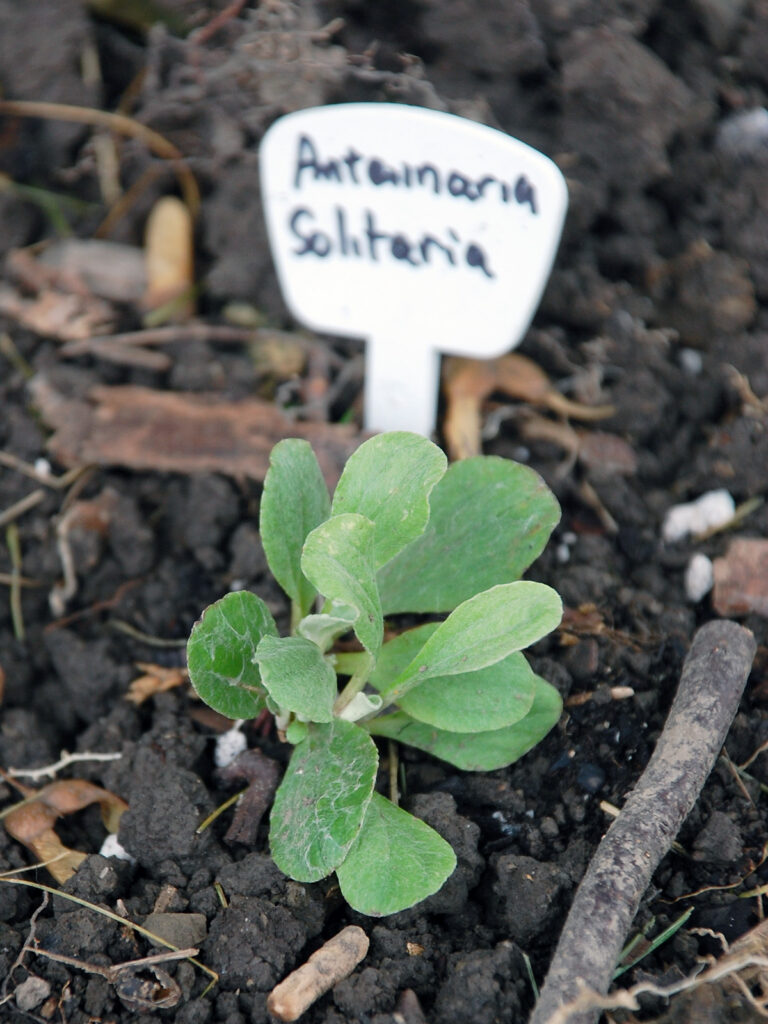
We got this from the Millersville Native Plant conference.
- Learn more:
- Wildflower Center: Singlehead pussytoes
Shale barren pussytoes (Antennaria virginica)
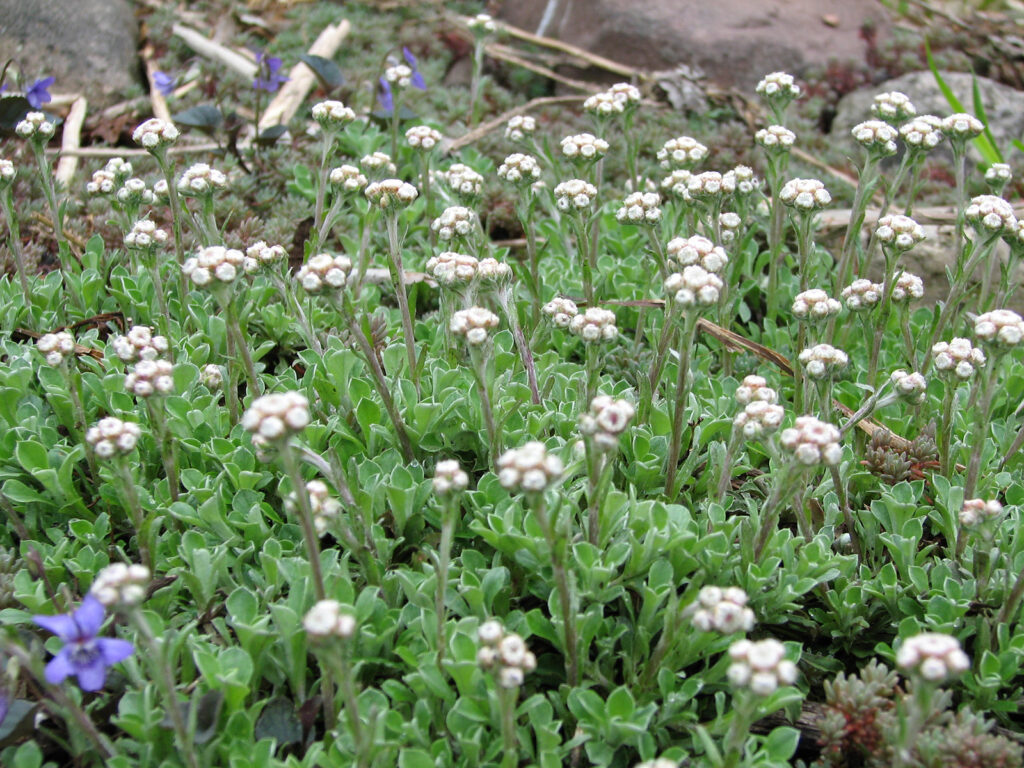
I’m pretty sure this is A. virginica, though I have other varieties of pussytoes, too. I try to keep track of these things nowadays!
It may be hard to tell in this photo, but this plant hugs the ground with the “pussy toes” projecting up about 6 inches. A very good groundcover.
I would have planted this anyway, but I’ve spread this around since it’s a host plant for American Lady butterflies. Note that these have the same kind of whitish fuzz on their leaves as do the pearly everlastings, another host plant for the American Lady. The caterpillars use this fuzz to create little shelters (called “larval nests”) for protection.
2022 Update: The pussytoes are doing great, BUT we haven’t seen any American Ladies for the last few years. Not a good sign…
2023 Update: Hurray! I didn’t see the butterfly, but she was obviously here, but on pearly everlasting plants (which are in the front yard), not on pussytoes (which are in the back yard).
- Learn more:
- Wildflower Center: Shale barren pussytoes
Wild columbine (Aquilegia canadensis)
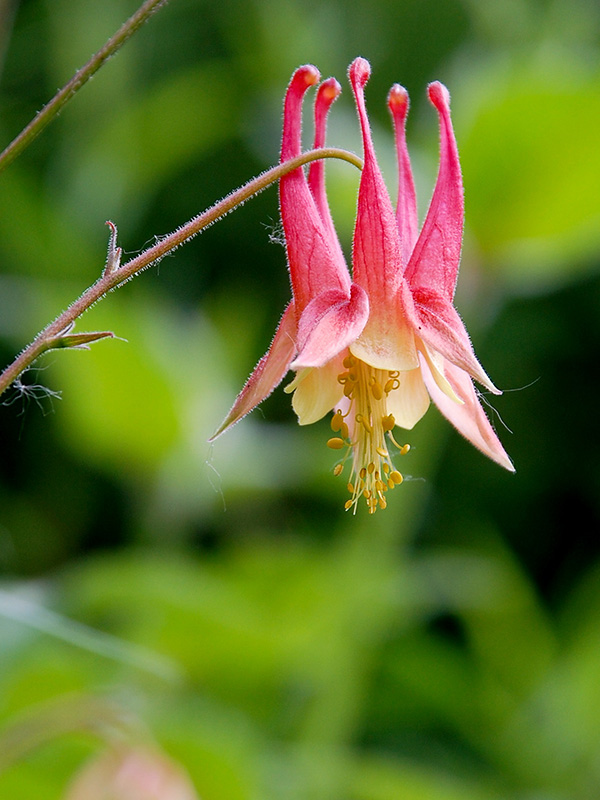
This is our native eastern columbine — a beautiful red and yellow. This is a favorite hummingbird flower for the nectar, but I suspect they also like the grab the little insects flying around the plant.
It’s no accident that it blooms about the same time hummingbirds return. The columbine depends on the hummingbird just as much as the hummingbird depends on columbine for an early source of nectar.
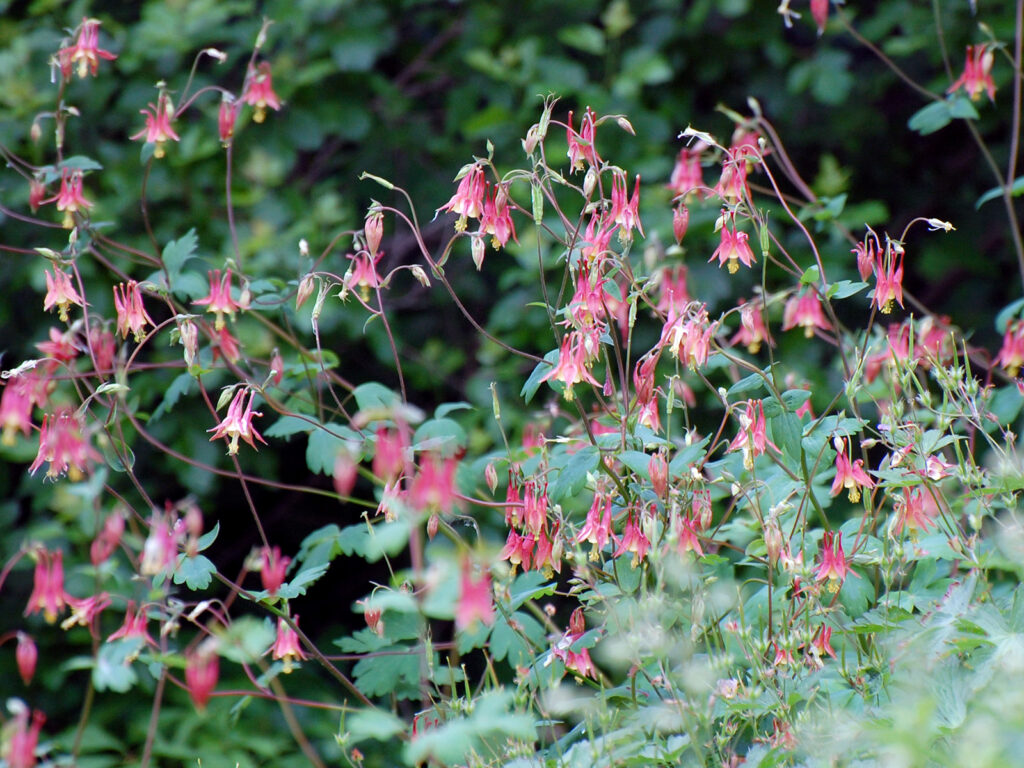
Wildlife: Nectar for hummingbirds, bees, butterflies, hawk moths; seeds for finches, buntings
Larval host: Columbine duskywing
Deer resistance: Moderate
- Learn more:
- Wildflower Center: Wild columbine
American spikenard (Aralia racemosa)
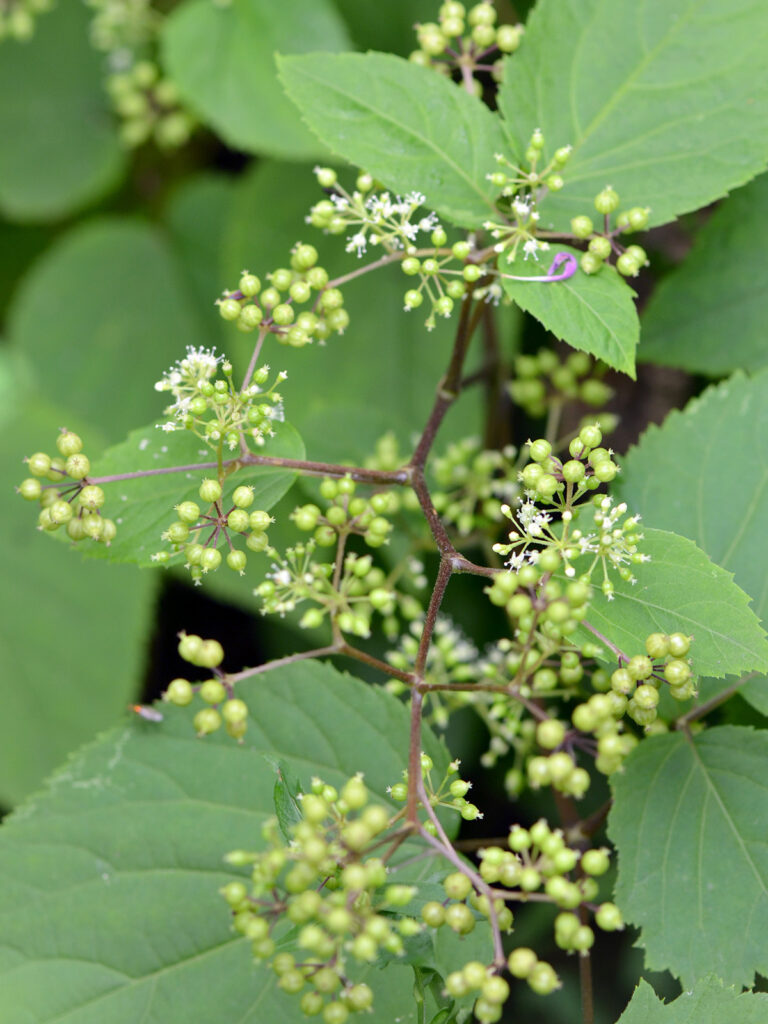
We bought this at Garden in the Woods, where we saw its bloom and berry cluster atop a fairly large herbaceous plant. We planted one in front of the arborvitaes, and one in front of the pussy willows.
Interesting fact: It’s a relative of ginseng.
- Learn more:
- Wildflower Center: American spikenard
Green dragon (Arisaema draconitium)
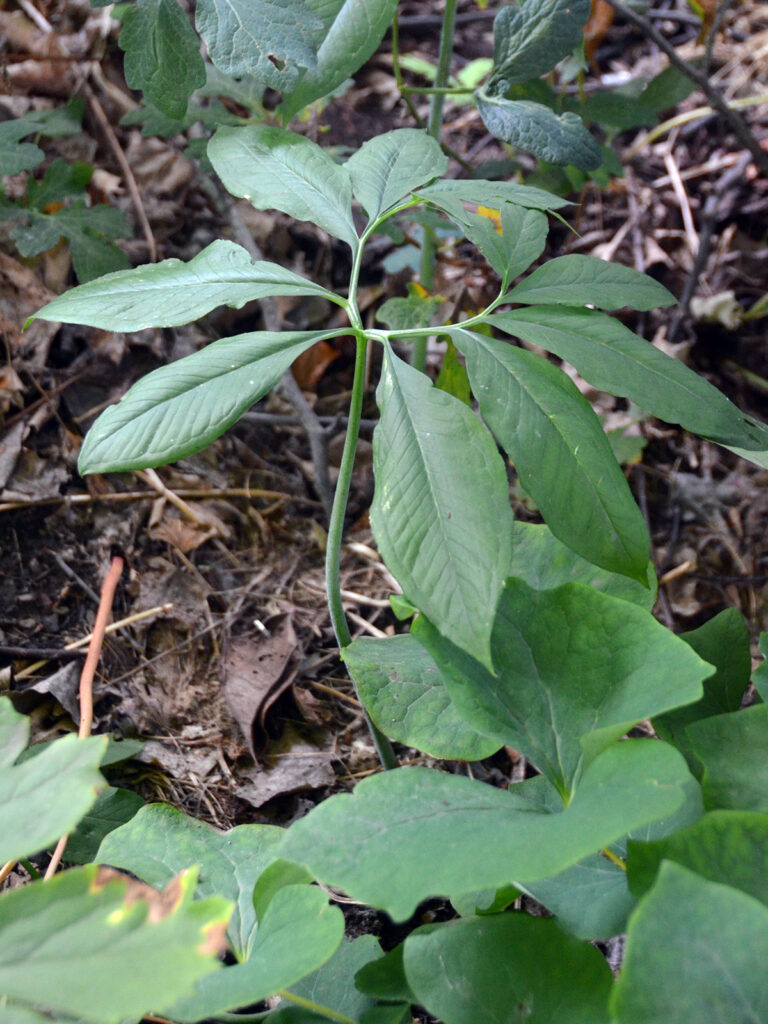
This plant has been here for a number of years. I can’t remember when or where I got it, and I don’t believe it has “flowered.”
On the other hand, it’s in an out-of-the-way spot and I probably haven’t paid attention. I’ll be looking for some activity from now on!
- Learn more:
- Wildflower Center: Green dragon
UNKNOWN Type of Arisaema
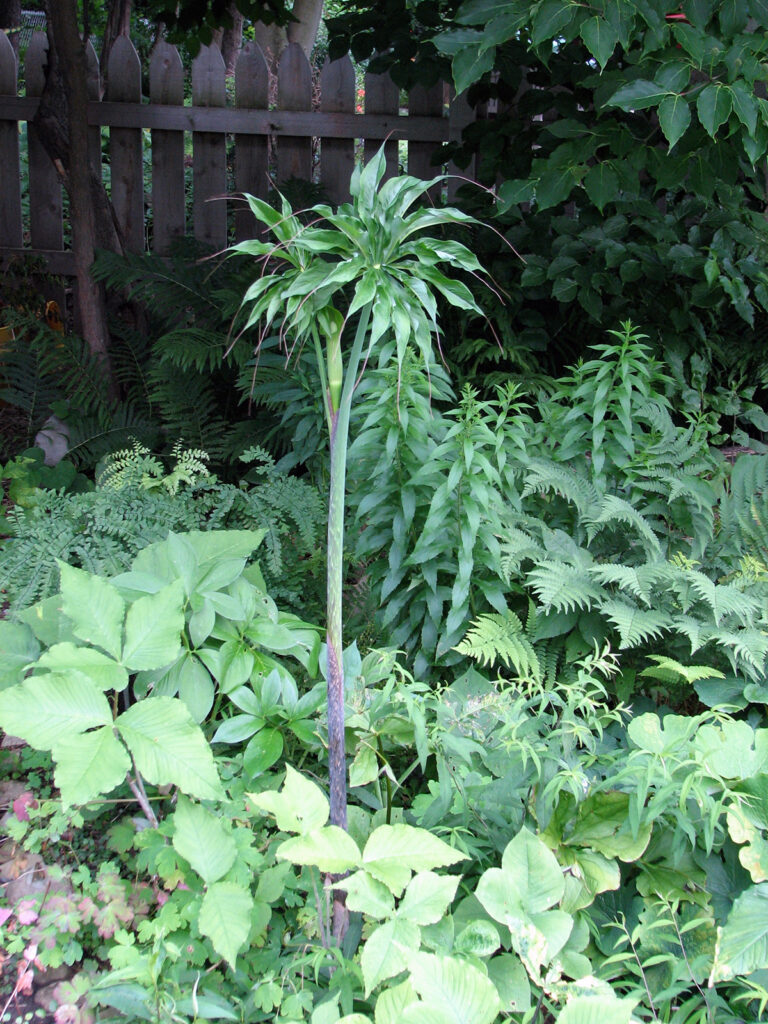
I bought this tall plant years ago at the regional market — before I was careful about keeping track of their names.
At any rate, whether it’s native or not it appears to be harmless since it has never reproduced.
Jack in the Pulpit (Arisaema triphyllum)
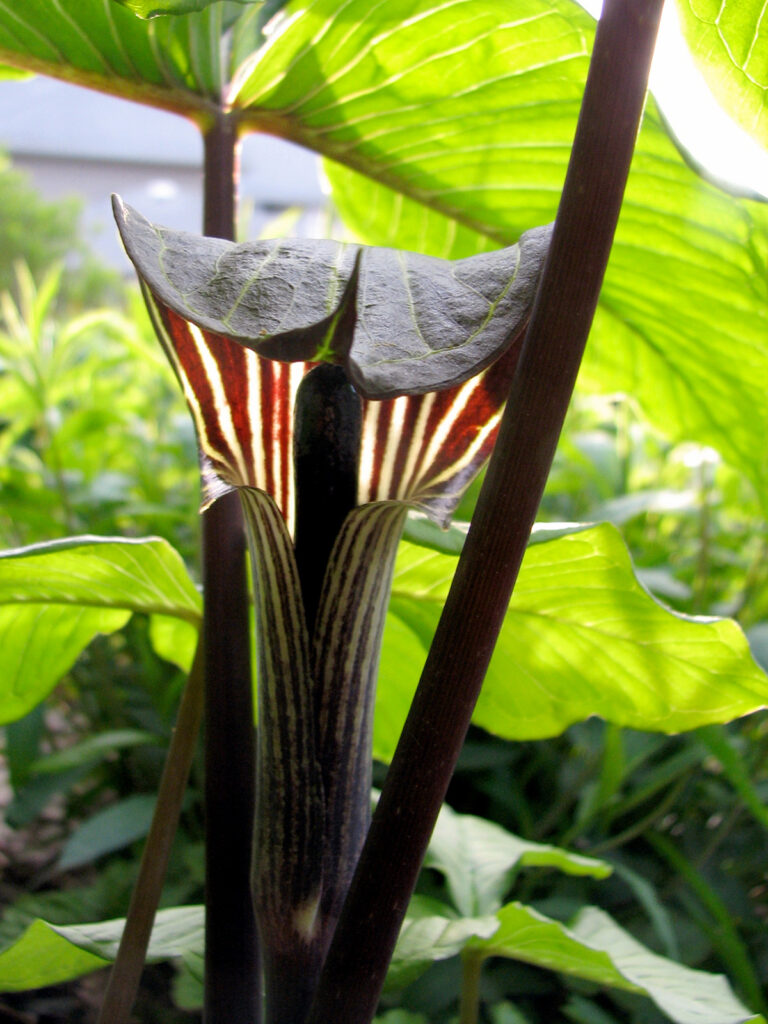
I love the bold stripes. They’re surprisingly easy to grow and even to start from seed. In fact I find little seedlings coming up by themselves. It seems too exotic-looking to be so easy.
CAUTION: Be careful where you buy these. Some nurseries collect them from the wild rather than growing their own. Alway patronize reputable native plant nurseries!
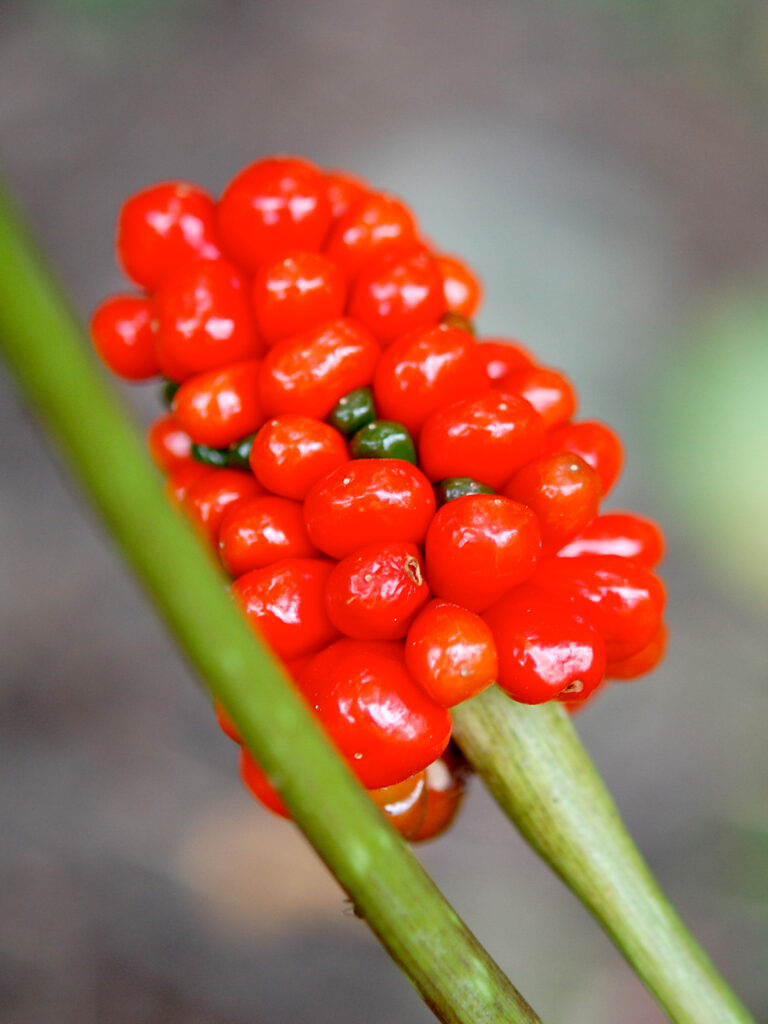
After flowering, Jack produces brilliant red berries. When you have a small colony of these plants, the berries provide quite a show.
Interesting facts from the Spring 2021 issue of Mitchelliana, the newsletter of the New York Flora Association:
“It is well-documented that individual jack-in-the-pulpit plants can change sex from year to year (Thompson 2000), with smaller plants only producing male flowers, large plants producing female flowers, and intermediate plants producing both. Often a plant that produced fruit in one year will revert to a smaller male plant for one or more years after. This is thought to be related to available energy reserves.
Jack-in-the-pulpit has a somewhat sinister means of pollination. Male plants produce a tiny opening at the base of the spathe to allow pollinators to escape so that they can visit other plants to pollinate. The female plants, however, do not produce this opening in the spathe. This forces the pollinator to remain inside the spathe longer to ensure cross-pollination, and sometimes the insects are not able to find their way out. “
Wildlife: Berries for birds, mammals
- Learn more:
- Wildflower Center: Jack in the pulpit
- EcoBeneficial: Short video on Jack in the pulpit
NOT QUITE NATIVE: Goatsbeard (Aruncus dioicus)
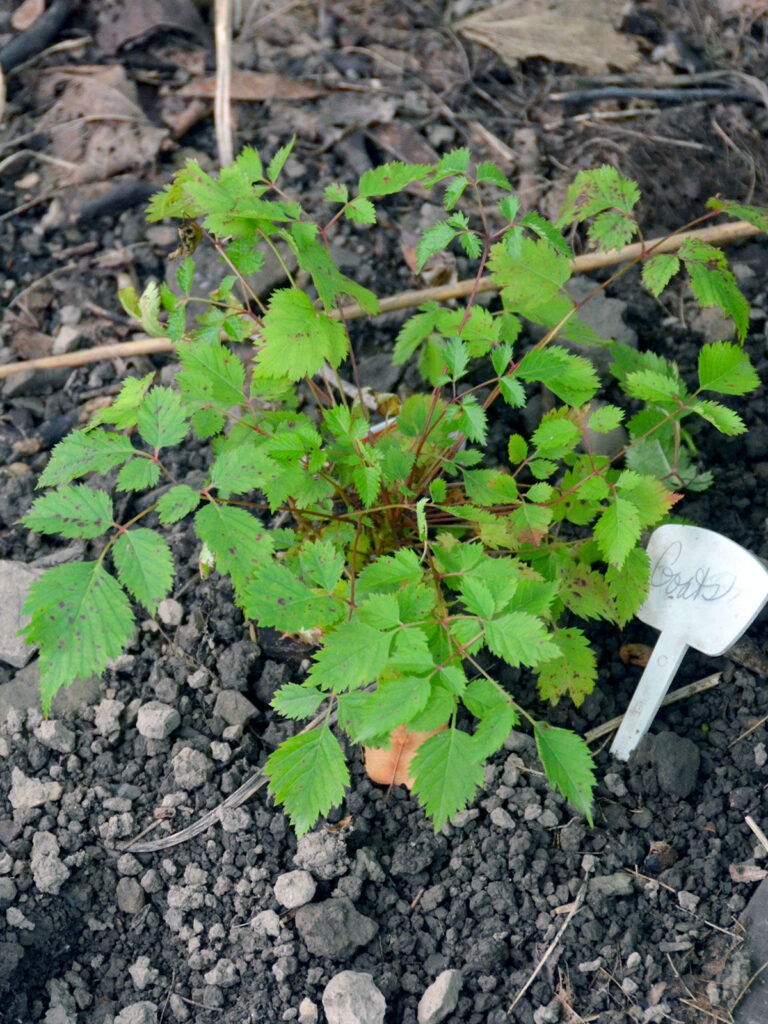
We got this at the HGCNY 2021 Fall Plant Sale (to replace the non-native version I had bought decades ago and have been trying to eradicate ever since).
Larval Host: Dusky Azure
- Learn more:
- Wildflower Center: Goatsbeard
Wild ginger (Asarum canadense)
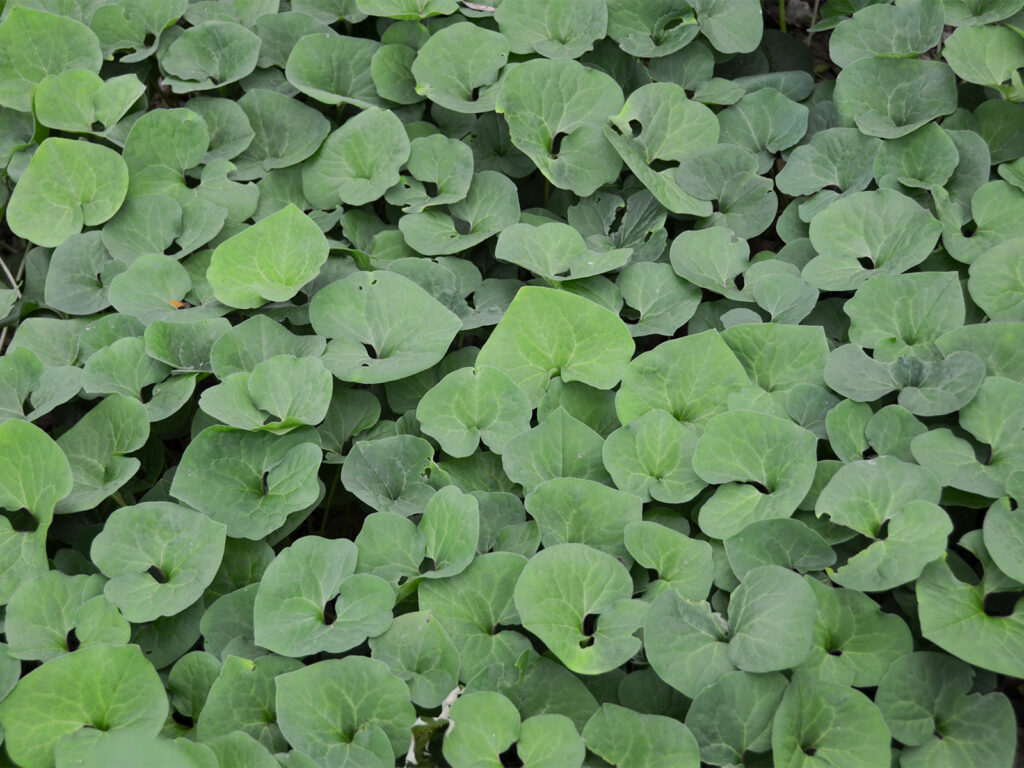
Ginger is grown for its foliage, and it makes an excellent native groundcover.
It’s also a host plant for the pipevine swallowtail butterfly.
If you look under the leaves of wild ginger, you see these intriguing flowers, nicknamed “little brown jugs.” Though no one would grow them for the flowers, it’s fun to peek under the foliage to get a glimpse of them.
Why so close to the ground? Because beetles and flies pollinate the flowers, not flying insects!
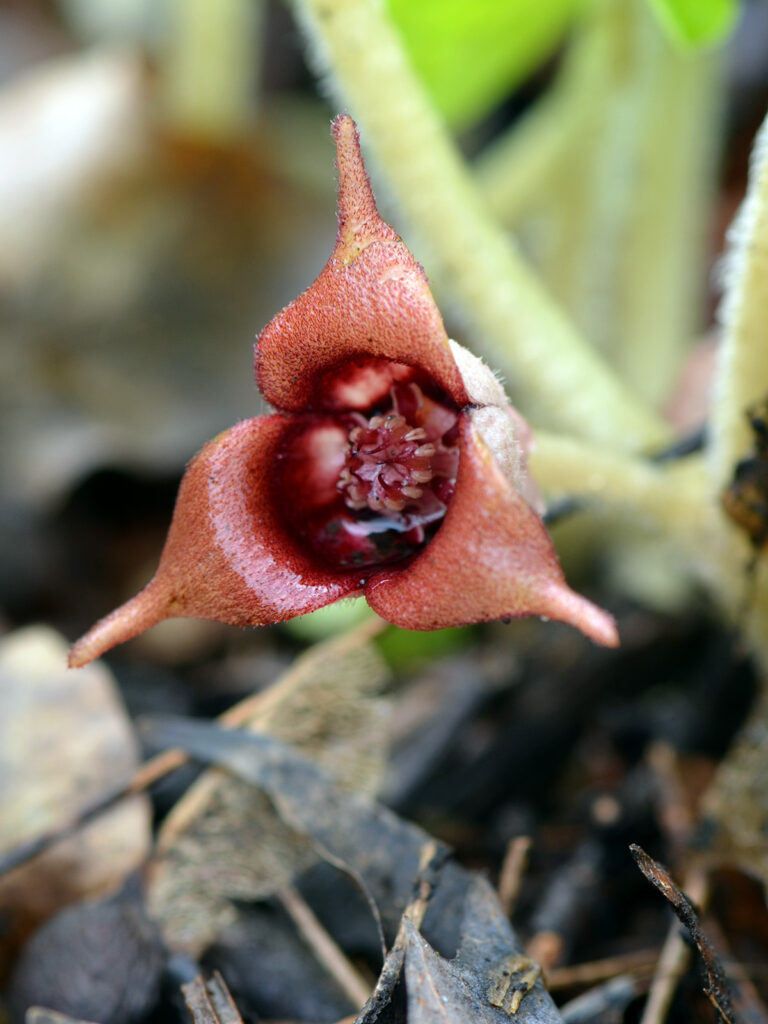
Larval host: Pipevine swallowtail butterfly
- Learn more:
- Wildflower Center: Wild ginger
- Lake Forest College: Wild ginger
